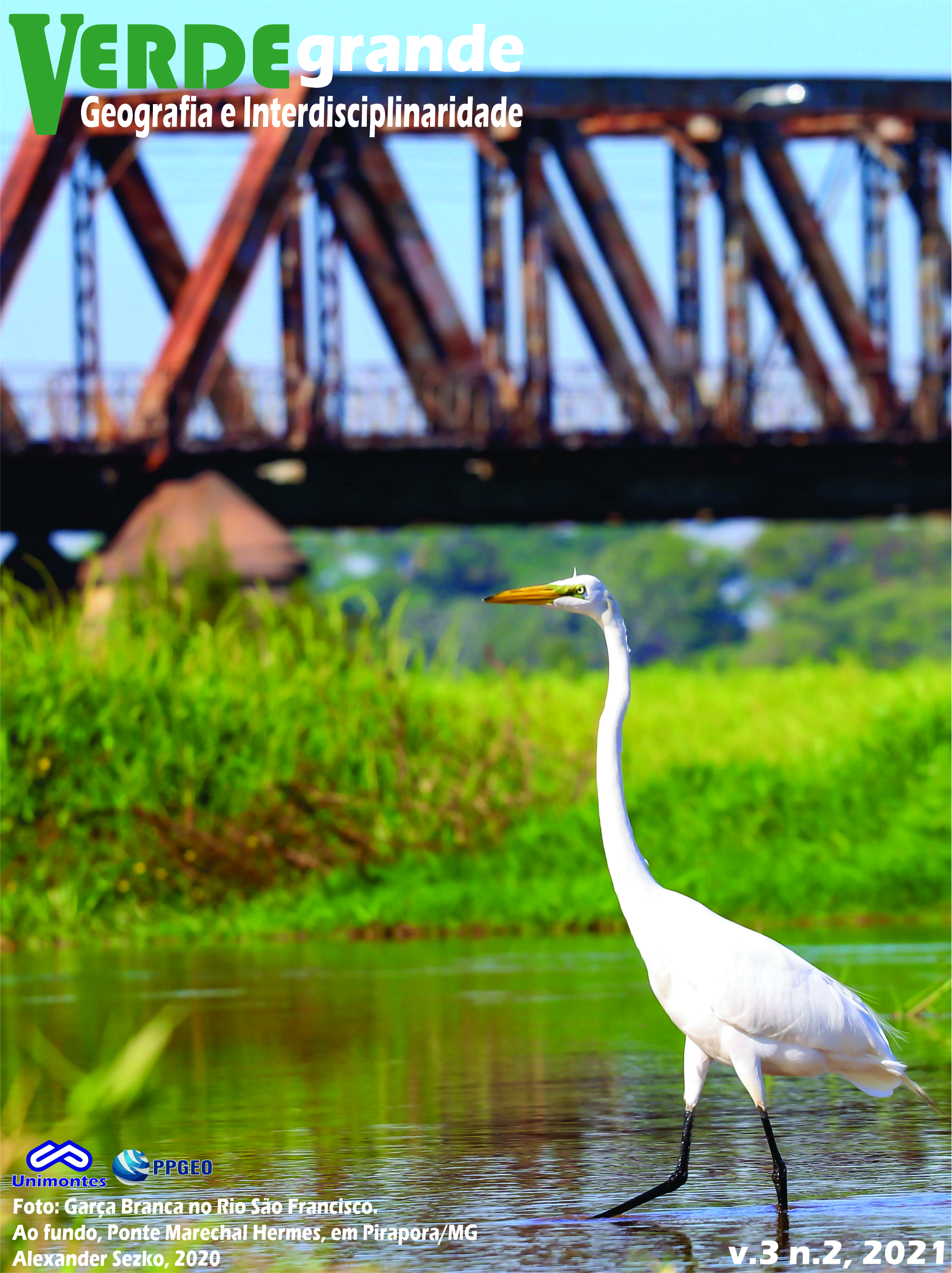THREATS TO THE HUMAN DIMENSION OF WATER SECURITY IN THE BORDER CITY OF OIAPOQUE - AP / EAST AMAZON
DOI:
10.46551/rvg26752395202126273Keywords:
Segurança Hídrica, Abastecimento de Água , Saneamento Básico, FronteiraAbstract
Water security, despite implying challenges in answering how, for whom and under what circumstances access to water is threatened, has become an important concept in understanding the degree of threat to which a population is subjected with respect to this resource. Despite the diferent approaches, from a human point of view, there is a consensus that, among other fundamental elements, water security is achieved when there is access to drinking water in sufficient quantity and quality, to satisfy basic human needs. Supported by this theme, the objective of this article is to introduce a brief discussion, based on the specialized literature on the topic of water security and on data on water supply and sewage in the border city of Oiapoque, in the extreme north of the state of Amapá with French Guiana, from data made available by the Brazilian Institute of Geography and Statistics - IBGE and the National Sanitation Information System - SNIS - on the conditions of water supply and basic sanitation in that territory. As a preliminary result, we found that water supply conditions, below desirable quality, compromise safe access to water, threatening the human dimension of Water Security.
Downloads
References
ANA. AGÊNCIA NACIONAL DE ÁGUAS. Conjuntura dos recursos hídricos no Brasil: informe 2015. Brasília: ANA, 2015. 103 p. Encarte especial sobre a crise hídrica. Disponível em: <http://biblioteca.ana.gov.br/index.asp?codigo_sophia=65829>. Acesso em: 28 nov. 2018.
BECKER, B. Inserção da Amazônia na geopolítica da água. In: ARAGÓN, L.; CLUSENER-GODT, M. (Org.). Problemática do uso local e global da água da Amazônia. Belém: Unesco/Naea/UFPA, 2003. p. 273-298.
BORDALO, Carlos Alexandre. O paradoxo da água na região das águas: o caso da Amazônia brasileira. GEOUSP: Espaço e Tempo (Online), v. 21, n. 1, p. 120-137, 2017. Disponível em: < https://www.revistas.usp.br/geousp/article/view/107531>. Acesso em: 03 fev. 2020.
CAESA. Companhia de Água e Esgoto do Amapá. Disponível em <https://caesa.portal.ap.gov.br/>. Acesso em: 25 de jan. 2021.
COOK, Christina; BAKKER, Karen. Water security: Debating an emerging paradigm. Global Environmental Change, v. 22, n. 1, p. 94–102, 2012. Disponível em: <https://doi.org/10.1016/j.gloenvcha.2011.10.011>. Acesso em: 10 dez. 2020
STEVENSON, Edward G.J. et al. Water insecurity in 3 dimensions: An anthropological perspective on water and women’s psychosocial distress in Ethiopia. Social Science and Medicine, v. 75, n. 2, p. 392–400, 2012. Disponível em: <https://doi.org/10.1016/j.socscimed.2012.03.022.> Acesso em: 13 jun. 2019.
IEPA. Macrodiagnóstico do Estado do Amapá. Primeira aproximação do ZEE. Macapá IEPA, 2ª edição, 2006. Disponível: em: <http://www.iepa.ap.gov.br/arquivopdf/macrodiagnostico.pdf >Acesso em: 02 jul. 2020.
JEPSON, Wendy et al. Advancing human capabilities for water security: A relational approach. Water Security, v. 1, p. 46–52, 2017. Disponível em: <https://doi.org/10.1016/j.wasec.2017.07.001>. Acesso em: 10 jun. 2020.
IBGE. IBGE Cidades. Disponível em: <https://cidades.ibge.gov.br/>. Acesso em: 10 mar. 2019.
LIMA, D. P. de. Avaliação da contaminação por metais pesados na água e nos peixes da bacia do Rio Cassiporé. Dissertação de mestrado apresentada ao Programa de Pós-Graduação em Biodiversidade Tropical da Universidade Federal do Amapá. 2013. 147 p.
ONU. Programa das Nações Unidas para o Desenvolvimento (PNUD). A água para lá da escassez: poder, pobreza e a crise mundial da água: relatório do desenvolvimento humano, 2006. Nova Iorque: PNUD: Lisboa: Trivona, 2006. Disponível em: <https://www.br.undp.org/content/brazil/pt/home/library/idh/relatorios-de desenvolvimento-humano/relatorio-do-desenvolvimento-humano-20006/>. Acesso em: 20 mai. 2019.
SNIS. Sistema Nacional de Saneamento Básico. Disponível em: <http://www.snis.gov.br/>. Acesso em: 05 mai. 2021.
TOSTES, J. A.; FERREIRA, J. F. de C. O Amapá e a Guiana francesa sob a ótica do corredor transfronteiriço. Confins. Revue franco-brésilienne de géographie/Revista franco-brasilera de geografia, 2017. Disponível em: <https://journals.openedition.org/confins/11947>. Acesso em; 20 mai. 2019.
TUNDISI, José Galizia. Recursos hídricos no futuro: problemas e soluções. Estudos avançados, v. 22, n. 63, p. 7-16, 2008. Disponível em: <https://www.scielo.br/scielo.php?pid=S010340142008000200002&script=sci_arttext&tlng=pt>. Acesso em: 03 fev. 2020.
UN WATER. Water Security & the Global Water. Agenda A UN-Water Analytical Brief., 2013. Disponível em: <https://www.unwater.org/publications/water-security-global-water-agenda/ >. Acesso em: 12 mai. 2021.
Downloads
Published
How to Cite
Issue
Section
License
Copyright (c) 2021 Sâmella Paungartten, Jader de Oliveira Santos

This work is licensed under a Creative Commons Attribution-NonCommercial-NoDerivatives 4.0 International License.
You are free to:
Share — copy and redistribute the material in any medium or format
The licensor cannot revoke these freedoms as long as you follow the license terms.
Under the following terms:
Attribution — You must give appropriate credit, provide a link to the license, and indicate if changes were made. You may do so in any reasonable manner, but not in any way that suggests the licensor endorses you or your use.
NonCommercial — You may not use the material for commercial purposes.
NoDerivatives — If you remix, transform, or build upon the material, you may not distribute the modified material.
No additional restrictions — You may not apply legal terms or technological measures that legally restrict others from doing anything the license permits.


















 Esta obra está licenciada com
Esta obra está licenciada com 